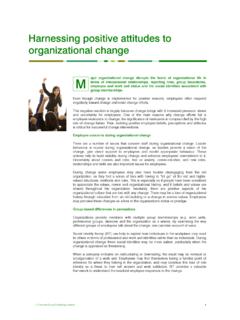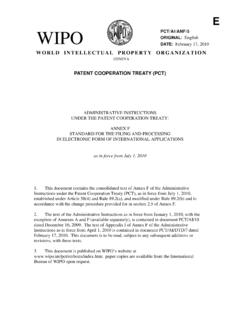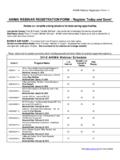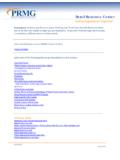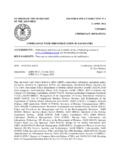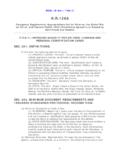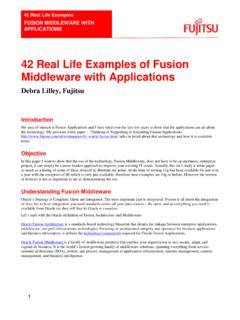Transcription of The impact of HRM and knowledge management …
1 Emerald Group Publishing Limited 1 The impact of hrm and knowledge management strategies nowledge management (KM) is about developing, sharing and applying knowledge within the firm to gain and sustain a competitive advantage. Its popularity has increased rapidly in the last decade, and it has become a central topic of management philosophy. Also, KM has been widely used recently by firms and organizations in order to improve decision making, product innovation, productivity and profits. How, then, is human resource management (HRM) related to KM? Many have argued that knowledge is dependent on people and that HRM issues, such as recruitment and selection, education and development, performance management , pay and reward, as well as the creation of a learning culture are vital for managing knowledge within firms.
2 One of the key factors in the growth of interest in knowledge management in the 1990s was the rediscovery that employees have skills and knowledge that are not available to (or captured by) the organization. It is perhaps no coincidence that this rediscovery of the central importance of people as possessors of knowledge vital to the organization followed an intense period of corporate downsizing, outsourcing and staff redundancies in the West in the 1980s. hrm and knowledge management The core business of the HR function is to develop the employees in accordance with the business strategy, select and hire people, train and develop the staff, evaluate their performance, reward them and create a culture of learning.
3 KM and HRM strategies There are basically two strategies for managing knowledge . These are: 1. codification; and 2. personalization. The former refers to the codification of explicit knowledge that is formal and objective and can be expressed in words, numbers and specifications. Such knowledge tends to be stored in databases where it can be accessed and used readily by anyone in the company. Such organizations invest heavily in ICT for projects like intranets, data warehousing and data mining, knowledge mapping and electronic libraries. This increases effectiveness and growth: The re-use of knowledge saves work, reduces communications costs, and allows a company to take on more projects. It is thus closely related to exploitative learning, which tends to refine existing capabilities and technologies, forcing through standardization and routinization, and is risk-averse.
4 Personalization refers to personal development of tacit knowledge that is based on insights, intuition and personal skills for solving complex problems. Such knowledge is mainly shared through direct person-to-person contacts. K The general strategy of the firm has a significant impact on both KM and HRM strategies . Emerald Group Publishing Limited 2 Dialogues, learning histories and communities of practice are among the techniques that have to be used in order to facilitate tacit knowledge sharing. It is based on the logic of expert economics , it is used primarily to solve unique problems, where rich, tacit personal knowledge is needed, such as in strategy consulting. Personalization and explorative learning are closely related, where explorative learning is associated with complex search, basic research, innovation, risk-taking and more relaxed controls.
5 The stress is on flexibility, investment in learning and the creation of new capabilities. Recruitment and selection Given that KM is often adopted by organizations in complex, unpredictable environments, traditional selection and recruitment practices have more often than not to be modified. In such settings, it may simply be too difficult to specify the requisite knowledge and expertise in advance. Traditional recruitment and selection practices can block knowledge sharing between groups or departments in firms organized according the functional principle. Where assessment centres are functionally focused they can strengthen the sub-cultures of functions and make knowledge sharing between functions very difficult.
6 Training and development Continuous professional development is considered to be essential to professional and knowledge workers. In order to stay at the forefront of their professional fields they must be constantly aware of developments within their specific disciplines and professions and they need to participate in activities that offer opportunities to further their own professional development. Many researchers on KM take this as given, and do not devote considerable attention to it. However, some argue that firms adopting codification strategies tend to hire undergraduates and train them in groups to be implementers, to emphasize knowledge acquisition, manipulation, and storage, including the focus on technology.
7 Personalization firms hire graduates to be inventors, to use their analytical and creative skills on unique business problems, and to share and disseminate knowledge . Once on board, their most important training comes from working with experienced consultants who act as mentors. If one relates this to single and double loop learning, then codification strategy focuses on single loop learning, while double loop learning is emphasized in personalization strategy. Performance management Performance management identifies who or what delivers the critical performance with respect to the business strategy and objectives, and ensures that performance is successfully carried out. Performance management systems can inhibit knowledge sharing, as much of the conflict between different functions can be due to the divergent objectives set out for employees in the performance agreements.
8 The objectives are, moreover, often short-term and mostly measurable in nature. The opposite is the case in long-term developmental focus on performance management found in many knowledge intensive companies. Finally, the KM strategies see effort, measurement and rewards differently. As a result, within the codification strategy, efforts associated with systems and technologies are more likely to be recognized and rewarded. Inside such a paradigm, key performance is related to technology, technology application and the volume of data. The personalization paradigm focuses more on people, where key performance indicators are related to people and tacit forms of knowledge as well as the quality of data.
9 Reward and recognition Reward systems indicate what the organization values and shapes individuals' behaviour. Studies on knowledge workers have found that they tend to have a high need for Emerald Group Publishing Limited 3 autonomy, significant drives for achievement, stronger identity and affiliation with a profession than a company, and a greater sense of self-direction. These characteristics make them likely to resist the authoritarian imposition of views, rules and structures. Accordingly, mixtures of rewards are needed to motivate knowledge workers. These include: equitable salary structures; profit-sharing or equity-based rewards; a variety of employee benefits; flexibility over working time and location, as well as being given credit for significant pieces of work.
10 For many knowledge workers it is as motivating to have free time to work on knowledge -building projects, going to conferences or spending time on interesting projects, as monetary rewards. General knowledge strategies management practices do not operate alone, divorced from the rest of the organization. Practices are, instead, interrelated and require a degree of compatibility and careful co-ordination. The general strategy of a firm and the HRM strategy, therefore, make up the general KM strategy. These KM and HRM strategies have many things in common. The codification strategy and low-cost strategy, for instance, both focus on effectiveness, lowering cost and standardization. The combined KM and general strategy of this kind is called exploitative strategy.


